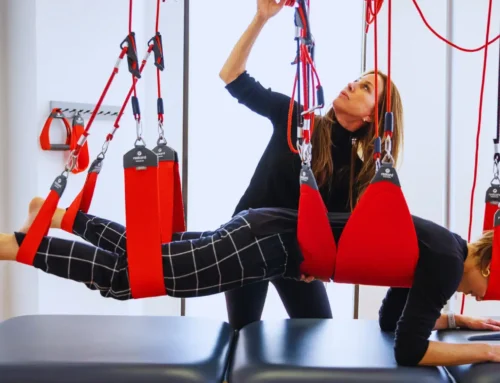Correcting bad posture is a gradual process that requires consistency, patience, and tailored strategies. At PostureWorks, we understand the importance of addressing postural issues to improve overall health and quality of life. Below, we discuss the timeline for improving posture, factors influencing the process, and how working with a physical therapist near you can accelerate your progress.
Posture Correction Timeline
The time required to correct bad posture varies from person to person and depends on factors such as the severity of the issue, age, and consistency with exercises. Here’s a general breakdown:
- Short-Term (1-4 Weeks): During this period, you may notice small improvements, such as reduced tension in the shoulders or back. These early changes often stem from increased posture awareness and basic exercises.
- Medium-Term (1-3 Months): Consistent practice leads to stronger muscles, better alignment, and the formation of new habits. This phase is when visible improvements in posture become evident.
- Long-Term (3-12 Months): For chronic or severe posture problems, significant progress may take several months to a year. Ongoing maintenance is essential to sustain these improvements over time.
While noticeable changes can occur within weeks, remember that correcting posture is a lifelong commitment to sustaining good habits.
Factors Affecting the Timeframe
Several variables influence how quickly you can correct your posture:
- Commitment to Exercises: Regular stretching and strengthening exercises targeting the core, back, and shoulders are critical. Exercises such as plank poses, thoracic extensions, and chin tucks are particularly effective.
- Severity of the Problem: Minor posture issues improve more quickly, while ingrained habits or structural problems like kyphosis take longer.
- Consistency: Daily practice is key to forming good posture habits and maintaining progress over time.
- Age and Physical Condition: Younger individuals tend to respond faster due to greater flexibility, while older adults may experience slower progress due to stiffness or other health factors.
How Can a Physical Therapist Help?
Seeking professional help from a physical therapist near you can significantly expedite the posture correction process. Here’s how a therapist can assist:
- Personalized Assessment: Physical therapists assess postural imbalances and design customized treatment plans to address your specific needs.
- Guided Exercises: They provide targeted stretches and strengthening routines to improve flexibility and muscle support.
- Advanced Techniques: Techniques like neuromuscular re-education and proprioceptive training enhance posture awareness and muscle coordination.
- Ergonomic Advice: They can recommend adjustments to your work or home setup to prevent posture-related issues from recurring.
Tips for Accelerating Posture Correction
- Be Mindful of Daily Habits: Regularly check your posture while sitting, standing, or walking.
- Incorporate Ergonomic Tools: Use ergonomic chairs, standing desks, or posture correctors that promote proper alignment.
- Break Sedentary Patterns: Take movement breaks throughout the day to stretch and activate muscles.
- Stay Consistent: Dedicate time daily to posture exercises and commit to the process.
Final Thoughts
Posture correction is not an overnight fix, but with consistency and proper guidance, significant improvements are achievable over time. Whether your goal is to alleviate pain, improve alignment, or enhance overall well-being, PostureWorks is here to support you at every step. For transformative results, consider searching for “physical therapist near me” to tailor an effective posture improvement strategy.
Embark on your journey to better posture today—your body will thank you for it!





